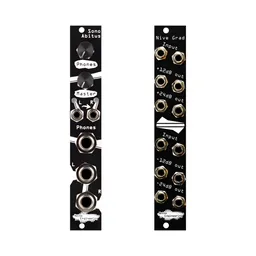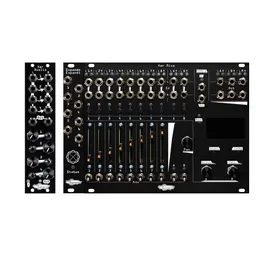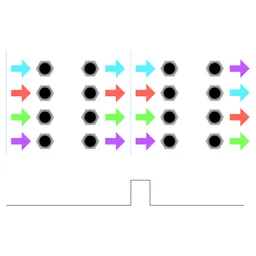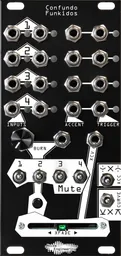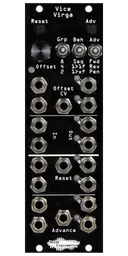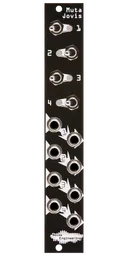Welcome back to Getting Started, the series where we explore the building blocks of synthesis and how you can use them in your patches. We previously chatted about sequential switches, but there are even more switching concepts that we want to cover. Today, we’ll overview the different types of switches you’ll run into in Eurorack, and which ones will suit your needs best.
Routing switches
Routing switches are a handy utility that rearrange the source and destination of signals based on control signals or user input. The core behavior is simple: a signal can be routed from one place to a variety of destinations, or a destination can have a variety of sources routed to it.
Routing switches are a fun way to make big changes in a patch. For instance, you could swap between two sequencers to transition melodies in a patch, or change what voice a sequencer is controlling to change the timbre of a melody.
Switches generally have a way of selecting a number of channels. For example, on Vice Virga, our routing module, the number of routing points can be set to groups of 2, 4, or 8. The number selected will depend on the goal of a patch – if you want to swap between two sequences you’ll only need two sources and one destination; if you want to remix an entire drum patch you may need a 4x4 or 8x8 configuration.
There are two main types of switches that you’ll run into in Eurorack, and the type you choose will depend on your patch.
Sequential switches
Sequential switches are the most well-known type of switch utility. They work similarly to a step sequencer, and change their routings based on trigger inputs. Generally, a clock input will advance the input to output routing on each trigger, and a reset input will reset the routing to the starting position.

Voltage-controlled switches
Voltage-controlled switches work similarly to sequential switches, but change their routing based on CV instead of triggers. A common use of a two-channel voltage-controlled switch is to swap between routings with a simple gate signal: the routing is swapped when the gate signal is high, and jumps back when the gate goes low.


I like to use sequential switches for rhythm and timing-based switching needs: I can route a clock or a trigger sequencer to the clock input and change routings at rhythmic points in a patch. I often use voltage-controlled switches to extend the capabilities of sequencers in my system, either by using gates to change routings for specific periods of time, or CV sequences to precisely control input and output routings.
If you’re unsure which type you’d use most commonly, hybrid switches like Vice Virga are a good option: they can be voltage or trigger controlled, depending on how you patch them.
Switch matrices
Traditional sequential switches generally have either a single input that can be routed to multiple outputs, or a single output that can have multiple inputs routed to it. This is a great choice for classic patches like extending the length of a sequence: by patching two lanes of an 4-step sequencer to the inputs of a switch and patching a /r clock to the clock input of the switch, we can create a 16-step sequence.


Performance switches
The switch types we’ve covered here integrate deeply into patches, but switches are also a useful tool in a performance, either for muting and unmuting signals in your patch, or changing signal routing manually.
A simple way to add a performative layer to a patch is with mute switches. Mutes have a single input and output per channel, and stop the input from passing to the output when the respective switch control is in the muted position. Mutes can be used on both control signals and audio, meaning they can change a variety of parts of your patch: stop a sequencer from advancing by muting its clock, mute a drum part by muting its trigger input, remove modulation from a destination by muting its CV…
Manual routing switches are another fun performance option. Vice Virga’s entire switch matrix can be controlled with an encoder, for example, if you want to rotate a bunch of routings in your patch at will. I have four main pitch/gate sequencers in my system, and I often use Vice Virga in 4x4 mode to swap what voice is controlled by what sequencer.
Suggested modules:
Vice Virga: our 8-in, 8-out routing switch that can be manually, voltage, or trigger controlled.
Muta Jovis: A four-channel performance mute.
Confundo Funkidos: An 8-in, 4-out performance switch with mutes and probability-based routing controls.
